Laminate flooring is a popular choice for homeowners due to its durability, affordability, and easy installation process. However, many people wonder if they can lay laminate flooring over their existing vinyl flooring. The answer is yes, in most cases, you can lay laminate over vinyl flooring, but it is important to assess your current vinyl flooring to ensure it is suitable for the installation.
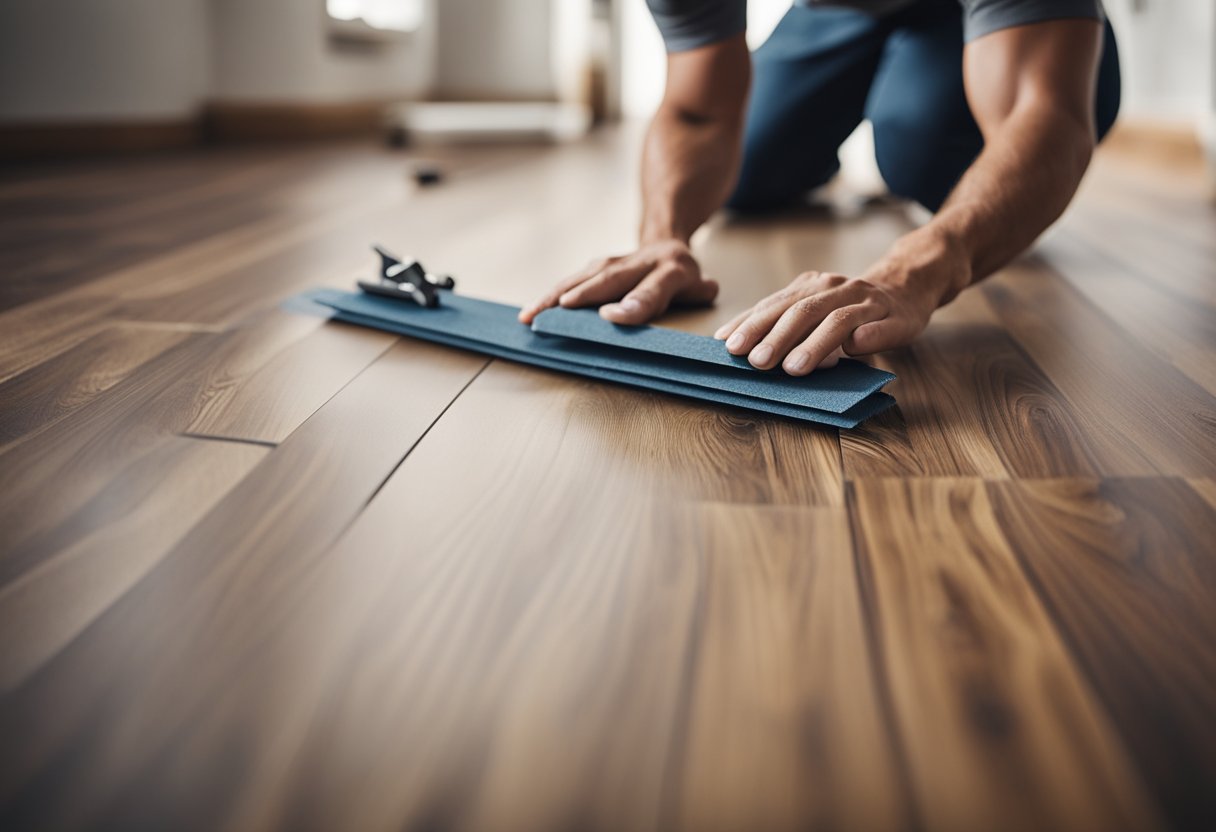
Assessing your current vinyl flooring is the first step in determining whether or not you can lay laminate over it. If your vinyl flooring is in good condition, free from any peeling, gaps, or damage, you can install laminate flooring on top. However, if your vinyl flooring is not in good condition, it should not be used as a subfloor. Additionally, you will need to ensure that your subfloor is concrete or hardwood and does not have any moisture issues.
Key Takeaways
- Laminate flooring can be installed over vinyl flooring if the vinyl is in good condition and the subfloor is suitable.
- Proper preparation is necessary for a successful installation.
- Transition strips and regular maintenance can help ensure the longevity of your laminate flooring over vinyl.
Assessing Your Current Vinyl Flooring
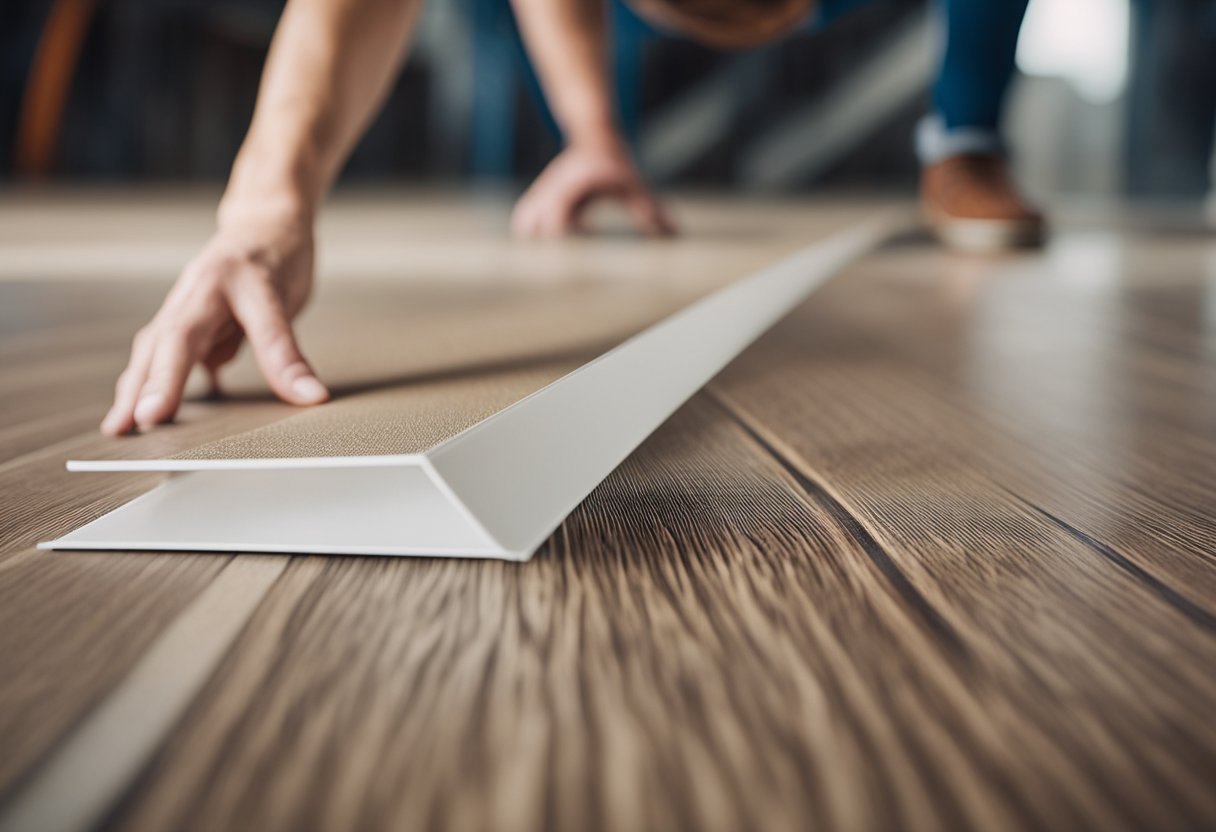
Before laying laminate flooring over vinyl, it is important to assess the current condition of your vinyl flooring. Here are some factors to consider:
- Intactness: Ensure that the vinyl flooring is intact and free from any tears, cracks, or damage. If the vinyl is damaged, it may not provide a stable base for the laminate flooring, leading to issues such as buckling or separating planks.
- Adhesion: Check that the vinyl is well-adhered to the subfloor. If the vinyl is not properly attached, it may shift or move, causing the laminate to become unstable.
- Asbestos: If your vinyl flooring was installed before 1980, it may contain asbestos. In this case, it is important to have the vinyl flooring tested for asbestos before attempting to lay laminate over it.
- Subfloor: Ensure that the subfloor is in good condition and suitable for laminate installation. A concrete or hardwood subfloor is preferable, as opposed to a carpeted or cushioned subfloor. Also, check for any moisture issues, as laminate flooring can be sensitive to moisture.
By assessing these factors, you can determine whether your vinyl flooring is a suitable base for laminate installation.
Benefits of Laying Laminate Over Vinyl
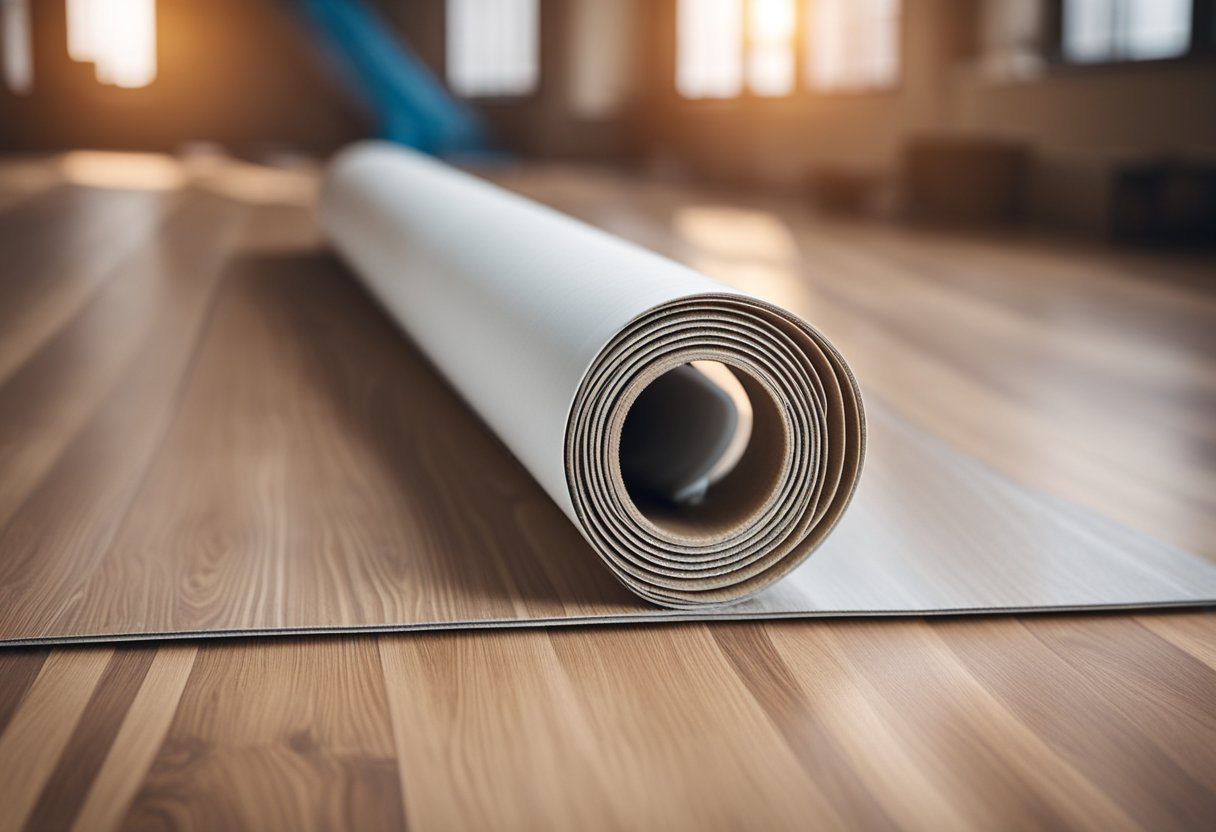
Cost-Effectiveness
Laying laminate over vinyl flooring is a cost-effective way to update your floors without breaking the bank. Vinyl flooring is often less expensive than other flooring options, and laminate is similarly priced. By laying laminate over vinyl, you can avoid the cost and hassle of removing the vinyl flooring altogether, saving you both time and money.
Ease of Installation
Another benefit of laying laminate over vinyl is the ease of installation. Laminate flooring is designed to be installed as a floating floor, which means it can be installed over many types of subfloors, including vinyl. This makes the installation process much simpler and faster than other flooring options that require the old flooring to be removed first.
Durability
Laminate flooring is known for its durability, and laying it over vinyl can help increase the lifespan of your floors. Vinyl flooring can be prone to scratches and dents, but laminate is much more resistant to these types of damage. Additionally, laminate flooring is easy to clean and maintain, making it a great choice for high-traffic areas like kitchens and entryways.
Overall, laying laminate over vinyl flooring is a cost-effective, easy-to-install, and durable option for updating your floors.
Preparation for Laminate Installation
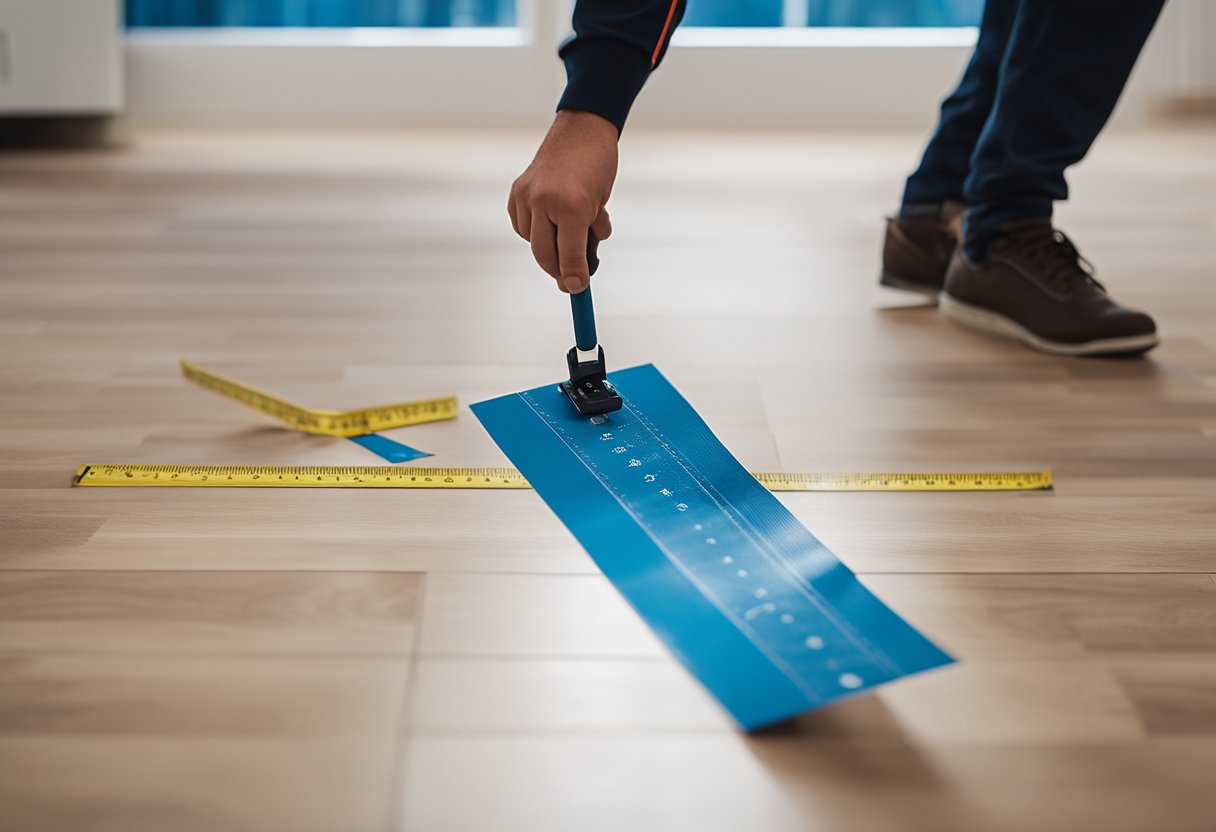
Cleaning the Vinyl Surface
Before installing laminate over vinyl, it is crucial to ensure that the vinyl surface is clean and free of any debris or dirt. To clean the vinyl surface, one should sweep or vacuum the floor to remove any loose dirt or debris. Then, the surface should be thoroughly cleaned using a damp mop and a mild cleaning solution. Avoid using abrasive cleaners or harsh chemicals that can damage the vinyl surface.
Leveling the Floor
To ensure a smooth and level surface for the laminate, it is essential to level the vinyl floor. Leveling the floor can be done using a self-leveling compound or by sanding down any high spots. If the vinyl floor is uneven, it can cause the laminate to buckle or warp over time. Therefore, it is crucial to take the time to level the floor properly.
Acclimating the Laminate
Before installing the laminate, it is essential to acclimate it to the room’s temperature and humidity levels. This can be done by leaving the laminate in the room for at least 48 hours before installation. Acclimating the laminate allows it to adjust to the room’s conditions, preventing any expansion or contraction after installation.
Overall, proper preparation is crucial when installing laminate over vinyl. Cleaning the vinyl surface, leveling the floor, and acclimating the laminate are essential steps to ensure a successful and long-lasting installation.
Tools and Materials Needed
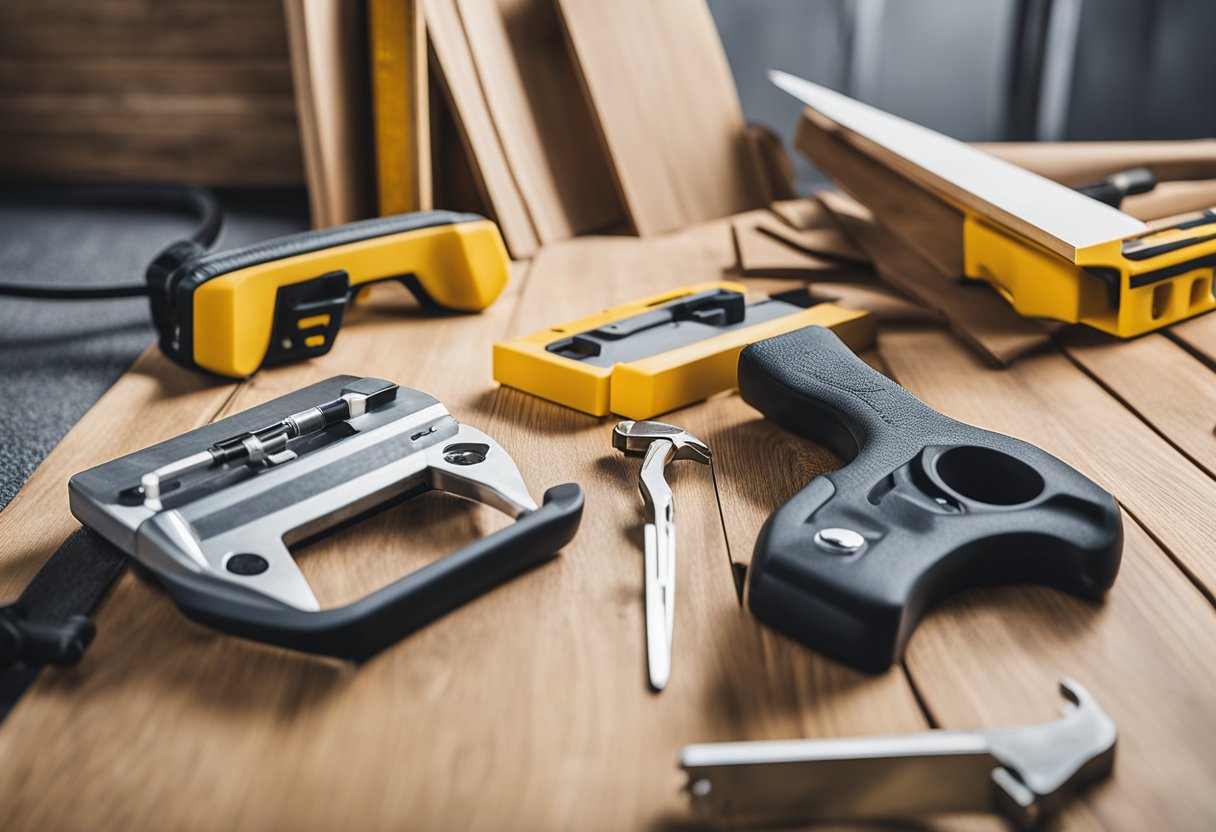
To lay laminate flooring over vinyl, there are a few tools and materials that one should have on hand. These include:
- Laminate flooring: Choose a laminate flooring that is suitable for installation over vinyl. Look for a laminate flooring that has a thin profile and is easy to install.
- Underlayment: An underlayment is a thin layer of material that is placed between the subfloor and the laminate flooring. It helps to absorb sound and provides a smooth surface for the laminate flooring to rest on.
- Measuring tape: A measuring tape is essential for measuring the dimensions of the room and the laminate flooring.
- Utility knife: A utility knife is used to cut the laminate flooring to fit around obstacles and to make precise cuts.
- Jigsaw: A jigsaw is a hand-held power tool that is used to make curved or irregular cuts in the laminate flooring.
- Spacers: Spacers are used to maintain a consistent gap between the laminate flooring and the walls.
- Tapping block: A tapping block is used to tap the laminate flooring into place without damaging the edges.
- Pull bar: A pull bar is used to pull the laminate flooring together at the seams.
It is important to have all of these tools and materials on hand before beginning the installation process. With the right tools and materials, laying laminate flooring over vinyl can be a simple and straightforward process.
Step-by-Step Installation Guide
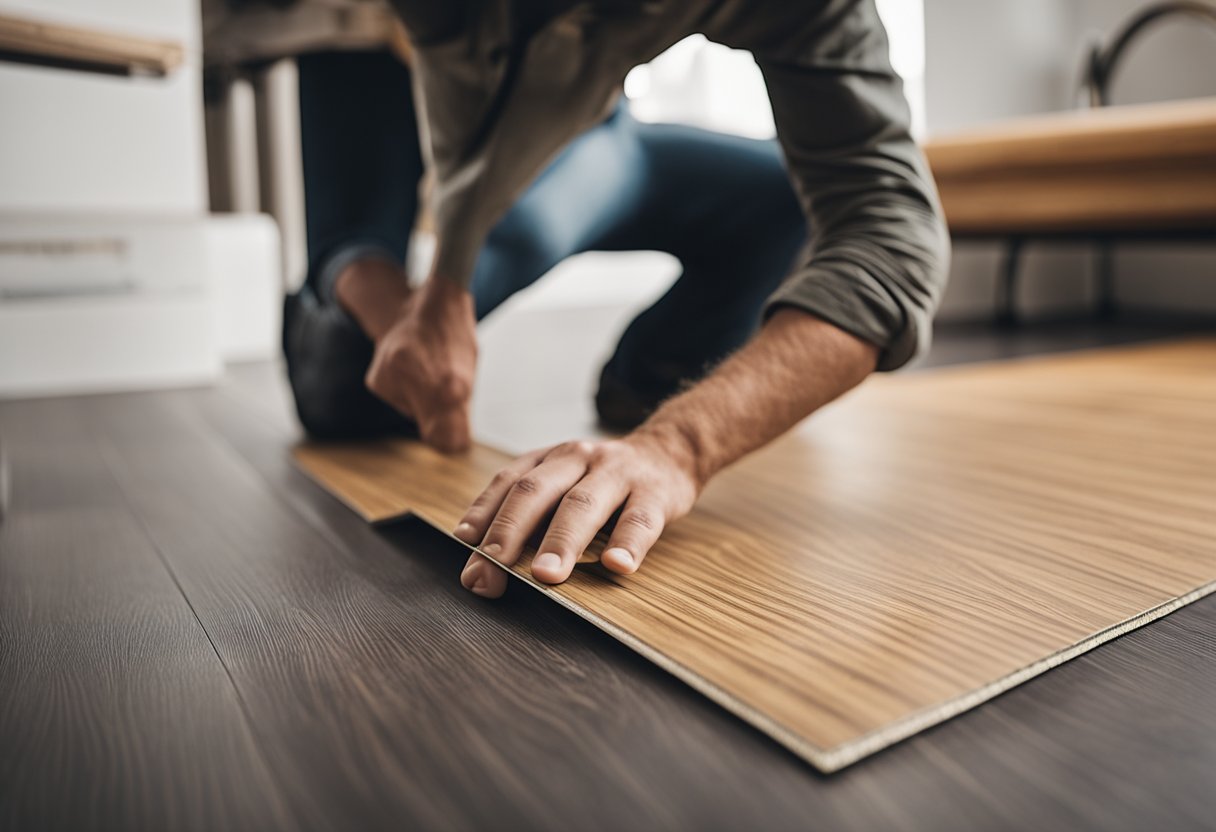
Measuring the Area
Before starting the installation process, it is important to measure the area where the laminate flooring will be installed. This will help determine the amount of materials needed for the project. Measure the length and width of the room and multiply the two numbers to get the total square footage. It is recommended to purchase an additional 10% of materials to account for any mistakes or waste during installation.
Cutting Laminate Planks
After measuring the area, the next step is to cut the laminate planks to fit the space. Use a saw to cut the planks to the desired length and width. It is important to leave a 1/4 inch gap between the laminate flooring and the walls to allow for expansion and contraction.
Laying the Underlayment
Before installing the laminate flooring, it is recommended to lay down an underlayment. This will provide a cushioning layer between the subfloor and the laminate flooring and help reduce noise. Roll out the underlayment over the entire floor, making sure to overlap the seams by a few inches. Cut the excess underlayment with a utility knife.
Installing the Laminate
Once the underlayment is in place, it is time to install the laminate flooring. Start by laying the first row of planks along the longest wall in the room. Use spacers to maintain a 1/4 inch gap between the planks and the wall. Continue installing the planks row by row, making sure to stagger the seams between the rows. Use a tapping block and a hammer to click the planks into place.
Overall, laying laminate flooring over vinyl can be a simple and cost-effective way to update the look of a room. By following these step-by-step instructions, homeowners can achieve a professional-looking installation that will last for years to come.
Transition Strips and Edging Solutions
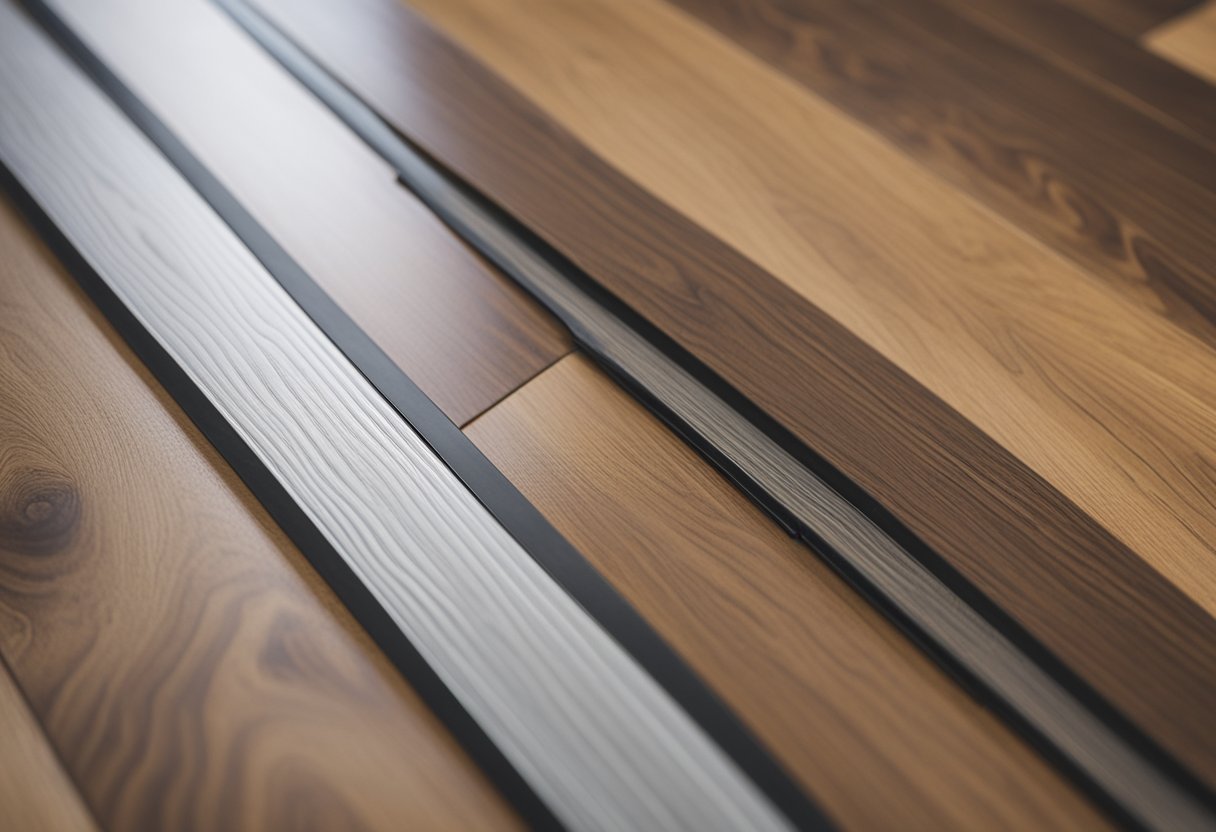
When laying laminate flooring over vinyl, it’s important to use transition strips and edging solutions to ensure a smooth and seamless finish. Transition strips are designed to cover the expansion gaps and unfinished ends in laminate flooring and provide a seamless transition between different floorings.
Endcaps, T-mouldings, reducers, and stair nose transition strips help cover a variety of laminate flooring edges. For example, T-moulding transition strips are used to join two floors of the same level, while reducers are used to transition from laminate to a lower flooring surface, such as vinyl. It’s important to choose the right type of transition strip for the specific flooring situation.
When installing transition strips, it’s important to avoid common installation mistakes that can lead to potential repairs down the road. One common mistake is gluing or nailing transition strips to the floating floor and the subfloor. Floating floors are designed to expand and contract freely, so they should never be secured to any fixed objects.
In addition to transition strips, there are also edging solutions that can be used to finish the edges of laminate flooring. For example, quarter round moulding can be used to cover the gap between the laminate flooring and the baseboard. It’s important to choose the right type of edging solution for the specific flooring situation to ensure a professional and polished finish.
Overall, transition strips and edging solutions are essential when laying laminate flooring over vinyl. By choosing the right type of transition strip and avoiding common installation mistakes, homeowners can ensure a seamless and professional finish that will last for years to come.
Maintenance Tips for Laminate Over Vinyl
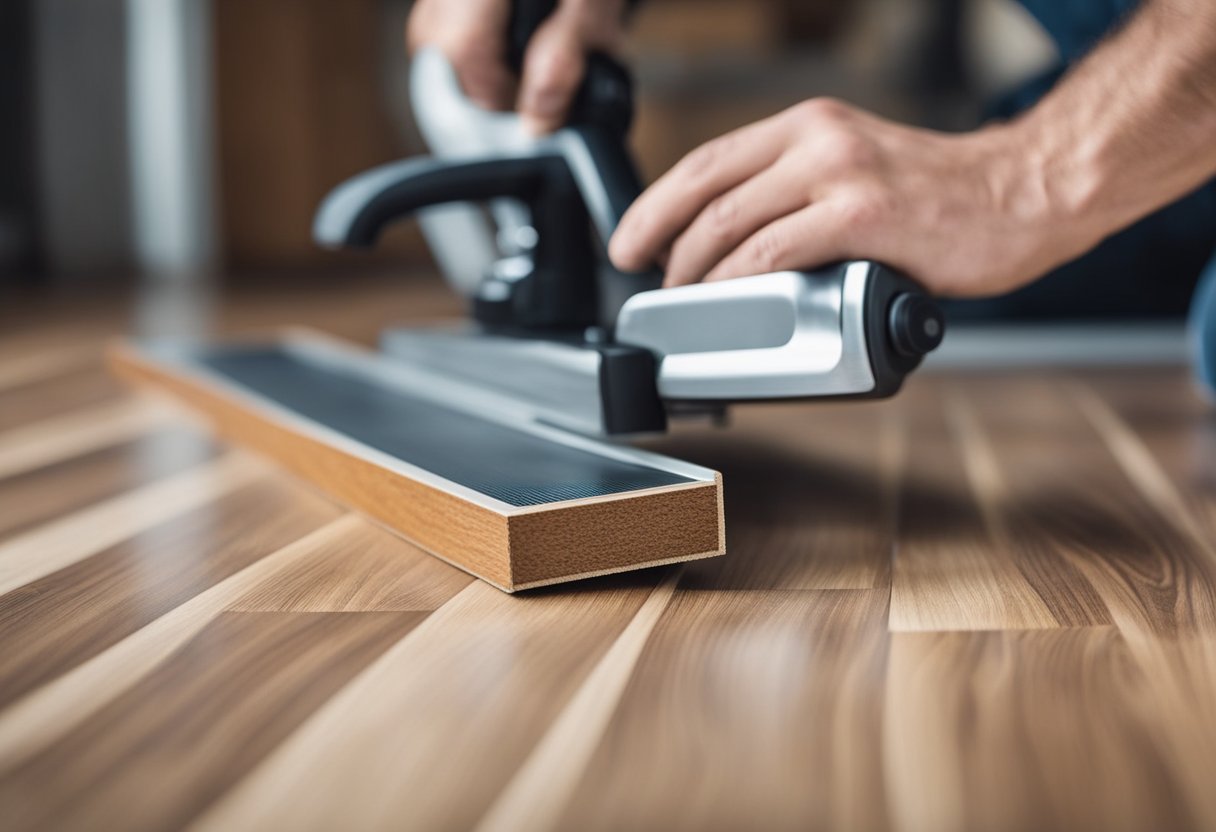
When laying laminate over vinyl, it is important to follow proper maintenance tips to ensure the longevity of your flooring. Here are some tips to keep in mind:
- Keep it dry: Laminate flooring is not waterproof, so it is important to keep it dry. Any spills should be wiped up immediately to prevent damage to the flooring. A damp mop can be used for regular cleaning, but excess water should be avoided.
- Use furniture pads: To prevent scratching or denting the laminate flooring, furniture pads should be used under all furniture legs. This will also make it easier to move furniture around without damaging the flooring.
- Avoid harsh chemicals: Harsh chemicals can damage the laminate flooring, so it is important to use only approved cleaning products. Avoid using abrasive cleaners, steel wool, or scouring pads.
- Sweep regularly: Dirt and debris can scratch the laminate flooring, so it is important to sweep or vacuum regularly. A soft-bristled broom or a vacuum with a hard floor setting can be used for this purpose.
- Avoid high heels: High heels can damage the laminate flooring, so it is best to avoid wearing them on the flooring. If high heels must be worn, it is recommended to use heel protectors.
By following these maintenance tips, you can ensure that your laminate flooring over vinyl will last for years to come.
Troubleshooting Common Issues

Dealing with Moisture
Moisture can be a significant issue when laying laminate flooring over vinyl. If there is any moisture trapped beneath the vinyl, it can cause the laminate to bubble or warp. To avoid this issue, it is essential to check the subfloor for any moisture issues before installation.
One way to check for moisture is to place a small piece of plastic on the subfloor and secure it with tape. Leave it for 24 hours, and if there is any condensation on the underside of the plastic, it means there is moisture present. In such cases, it is best to address the moisture issue before laying the laminate flooring.
Repairing Scratches and Gaps
Scratches and gaps can be a common issue when laying laminate flooring over vinyl. To fix scratches, use a laminate floor repair kit or fill them with a wax pencil that matches the color of the flooring. For larger scratches, use a putty knife to fill them with a laminate floor filler.
Gaps can occur due to improper installation or expansion and contraction of the flooring. It is essential to leave a small gap between the flooring and the wall to allow for expansion. If there are gaps between the planks, use a laminate floor repair kit or a color-coordinated caulk to fill them.
Overall, these common issues can be easily addressed with proper installation and maintenance. By following the manufacturer’s instructions and taking the necessary precautions, homeowners can enjoy a beautiful and long-lasting laminate flooring installation.
Environmental Considerations
When considering laying laminate flooring over vinyl, it is important to take into account the environmental impact of the project. One of the main benefits of laminate flooring is that it is made from recycled materials, which can help reduce waste and promote sustainability. Additionally, laminate flooring is often treated with a low-VOC finish, which can help reduce the amount of harmful chemicals released into the air during installation.
However, it is important to note that vinyl flooring can also be made from recycled materials and can be treated with low-VOC finishes. It is important to research the specific brand and type of vinyl flooring being used to determine its environmental impact.
Another environmental consideration to keep in mind is the disposal of the old vinyl flooring. If the vinyl flooring is not properly disposed of, it can contribute to landfill waste and harm the environment. Homeowners should research local recycling and disposal options to ensure that the old vinyl flooring is disposed of in an environmentally responsible manner.
Overall, while there are environmental considerations to keep in mind when laying laminate flooring over vinyl, it is possible to do so in a way that promotes sustainability and reduces waste. Homeowners should research the specific materials being used and disposal options to ensure that the project has minimal impact on the environment.
When to Consult a Professional
Laying laminate flooring over vinyl can be a DIY project, but there are times when a professional should be consulted. Here are some instances when it is best to call in an expert:
- Uneven subfloor: If the vinyl flooring underneath is not level, it can cause problems for the laminate flooring. Uneven subfloors can cause the laminate to buckle or crack over time. A professional can help level the subfloor before laying the laminate.
- Water damage: If the vinyl flooring has water damage, it is important to address the issue before installing laminate flooring. A professional can assess the damage and determine if the subfloor needs to be replaced or repaired.
- Asbestos concerns: If the vinyl flooring was installed before the 1980s, it may contain asbestos. Asbestos can be dangerous when disturbed, so it is important to have a professional assess the situation before removing or covering the flooring.
- Complex layouts: If the room has a complex layout, such as multiple angles or curves, it can be difficult to install laminate flooring properly. A professional can help ensure that the laminate is installed correctly and looks great.
- Limited DIY experience: If the homeowner has limited DIY experience, it may be best to hire a professional to install the laminate flooring. A professional can ensure that the job is done right the first time and can provide tips for maintaining the flooring over time.
Overall, while laying laminate flooring over vinyl can be a DIY project, there are times when it is best to consult a professional. By doing so, homeowners can ensure that the job is done right and that the flooring looks great for years to come.
Frequently Asked Questions
Is underlayment necessary when installing laminate flooring over vinyl?
Yes, an underlayment is necessary when installing laminate flooring over vinyl. According to Ready To DIY, an underlayment will help to smooth out any minor imperfections in the subfloor and provide a moisture barrier to prevent mold growth.
Can laminate flooring be installed directly on top of vinyl on a concrete substrate?
Yes, laminate flooring can be installed directly on top of vinyl on a concrete substrate. However, it is important to ensure that the vinyl is in good condition and is securely attached to the subfloor. According to Best Laminate, it is also important to use an underlayment to provide a moisture barrier and to help smooth out any minor imperfections in the subfloor.
Is a foam barrier required when laying laminate over existing linoleum floors?
Yes, a foam barrier is required when laying laminate over existing linoleum floors. According to Floorflix, a foam barrier will help to absorb sound and provide a cushioned layer between the laminate flooring and the linoleum.
What are the common mistakes to avoid when laying laminate flooring?
There are several common mistakes to avoid when laying laminate flooring. According to LL Flooring, these include not properly acclimating the flooring, not leaving enough expansion space around the perimeter of the room, and not properly preparing the subfloor.
Does vinyl flooring need to be removed before installing laminate on top?
No, vinyl flooring does not need to be removed before installing laminate on top. According to Woodworking Advisor, installing laminate flooring over vinyl can save money on the cost of tearing out the old floor and installing a completely new one.
Can you install laminate flooring on top of old laminate floors?
It is not recommended to install laminate flooring on top of old laminate floors. According to Best Laminate, the old laminate flooring should be removed before installing the new flooring to ensure a smooth and even surface.